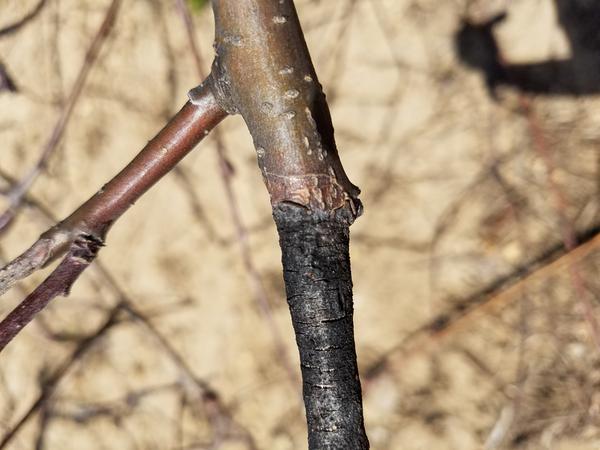

This ooze, consisting of millions of bacterial cells, is spread to blossoms by insects such as flies, ants, and beetles. During spring and early summer, cankers that were not removed the previous season may produce bacterial ooze, which may or may not be visible. Note blackened leaves and fruitletsįire blight bacteria overwinter primarily in cankers on infected trees. Note browning of leaves andĭroplets of amber coloured bacterial ooze on fire blightįire blight-infected apple fruitlet, with bacterial ooze Later in the season the bark often cracks around the margins of the canker.īlossom blight on pear. Reddish brown streaks may be seen in the cambium under the bark of diseased branches. In susceptible hosts or young trees the disease may travel rapidly down branches causing girdling and death of the branches or sometimes the main trunk.Ĭankers appear as slightly darker, water soaked areas in the wood, which may produce amber coloured bacterial ooze that runs down the bark. When shoots attached to scaffold limbs or trunks are attacked, the pathogen may spread into the structural wood causing cankers. Blighted leaves may remain attached to the tree throughout the winter. During warm and humid or rainy weather drops of milky to amber coloured bacterial ooze frequently appear on the blighted shoots and fruit. Infected shoots (or "strikes") wilt rapidly, and often form a shepherd's crook at their tips. Fruitlets quickly turn brown to black and eventually shrivel up.īlighted pear shoots are black in colour, while infected apple shoots are usually a lighter shade of brown. Young fruitlets are also very susceptible and appear water soaked and slightly off-colour soon after infection.

Blighted blossoms appear wilted, shriveled and brown or black. Symptomsįire blight symptoms may appear on the blossoms, shoots, branches, trunk and rootstock. Risk of fire blight is strongly related to weather conditions, history of fire blight in the area, and susceptibility of the host tree. Outbreaks of fire blight occur sporadically in British Columbia pear and apple orchards. It causes severe blighting of blossoms, shoots, limbs and fruit, and can kill young trees. Several consecutive days of ambient temperatures near 33☌ in 1994 raised temperatures inside the tents to 56☌, resulting in complete eradication of the pathogen and death of tops of the trees.Fire blight is a destructive bacterial disease of apple, pear and other related species such as crabapple, hawthorn, quince and mountain ash. amylovora were isolated from cankers, while cankers on untreated trees continued to expand. In many solarized trees, canker expansion was stopped and no viable E. Results were variable depending on tree species, ambient temperatures, and the year. Temperatures at 3 heights inside the tent, and ambient temperatures were recorded.

High temperatures and reduced water and nutrient availability are reported to stop disease progress but growers are usually unable to control these factors.Įlevated temperatures obtained through solarization of soil have been shown to reduce inoculum of pathogens.Īpple and pear trees with active cankers were completely covered with a 10 x 10 m polyethylene tarp left in place for 4 to 7 days in the summers of 19. Solarization of entire trees under "tents" of clear polyethylene was used as a means to stop the progress of fire blight infections and eradicate Erwinia amylovora from infected tissues. ISHS Acta Horticulturae 411: VII International Workshop on Fire Blight SOLARIZATION OF PEAR AND APPLE TREES TO ERADICATE BACTERIA IN FIRE BLIGHT CANKERS

SOLARIZATION OF PEAR AND APPLE TREES TO ERADICATE BACTERIA IN FIRE BLIGHT CANKERS


 0 kommentar(er)
0 kommentar(er)
